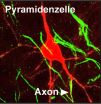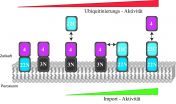(Press-News.org) September 22, 2014 - Neurosurgeons have treated head and spinal sports injuries since the specialty was formed in the early 20th century, with formal efforts to mitigate these injuries dating back to 1931. Current Concepts in Sports Concussion is a comprehensive, 16-article supplement of Neurosurgery, official journal of the Congress of Neurological Surgeons, published by Lippincott Williams & Wilkins, part of Wolters Kluwer Health. The supplement includes a detailed, fascinating history of concussion treatment and research. The lead guest editor is Chicago-area neurosurgeon Gail Rosseau, MD, who serves on the Board of Directors of USA Football and ThinkFirst.
"Neurosurgeons have always been and remain at the forefront of sports concussion and traumatic brain injury advocacy and prevention initiatives. In 1986, ThinkFirst, the international head and spine injury prevention program was established by organized neurosurgery. More recently, neurosurgeons were front and center in the national advocacy effort to get Lystedt laws passed in all 50 states. Further, as the articles attest to, many neurosurgeons are right there on the sidelines and working in research labs, with the common goal of keeping athletes safe, whether NFL players or youngsters playing Pop Warner football," Dr. Rosseau said.
History and the Role of the Helmet
The origin of the leather football helmet goes back to the Army-Navy game of 1893 when a Navy player was told by a physician that "he would be facing death if he took another hit to the head." In 1906, the Intercollegiate Athletic Association of the United States was formed and it was then that protective leather headgear was worn by players with increasing frequency. Helmets became mandatory at the high school level in 1935, and at the college level in 1939.
In the 1950s-1960s, Richard C. Scheider, a neurosurgeon in Ann Arbor, Michigan, reviewed and analyzed injury patterns in serious or fatal neurosurgical football injuries. He used this data to develop primate research studies which concluded that vertex deceleration resulted in direct transmission of force through the rigid, nonresilient helmet and intact skull to the brain. This important research resulted in his own helmet patent and set the stage for ongoing improvements in helmet technology. Along these lines, Current and Future Concepts in Helmet and Sports Injury analyzes the biomechanics of helmets, looking at translational (linear) force and rotational (angular) force and how this relates to concussion and more severe head injury.
In 1941, neurosurgeon Walter Dandy patented the first protective baseball cap insert.
While protective helmets do not prevent concussion, it is widely believed that if used properly, they may prevent other forms of head injury (eg, skull fracture) and are recommended for many sports.
Helmet-to-helmet blows in American football lead to 61% of impacts causing concussion.
A 2002 to 2004 study of 2141 high school football players found a reduction in the concussion rate from 7.6% with standard helmets to 5.3% with helmets with greater offset and padding.
When the NFL began fining players for intentional head-to-head contact, it became a huge disincentive for players to tackle with their helmets, and the activity began to disappear.
NFL Commissioner Roger Goodell articulates his plans for improving the safety of football players in Accelerating Progress on the Road to Safer Sports: Neurosurgical Society of America - NSA Medal Lecture. "Our primary commitment is to change the culture of football to better protect players without changing the essence of what makes the game so great. How do we do that? We start by leading a culture change in the NFL that will impact the culture at other levels of the game, especially youth football. A culture of safety includes rule changes, investment in the development of innovative protective equipment, and providing medical staffs with the tools and authority to protect players."
The story of Zackery Lysedt, who suffered a lifealtering acute bilateral subdural hematoma during a middle school football game in October 2006, is compellingly retold in Concussion Advocacy and Legislation: A Neurological Surgeon's View From the Epicenter. Many medical experts believe that if Zack had been removed from the game after his first obvious concussion, that he would not have experienced catastrophic neurological deterioration later that day. On May 14, 2009, The Zackery Lystedt Law passed in Washington State and served as an inspirational model for youth sports concussion laws for the rest of the country. The article expounds on the details of Zack's injury, the legislation he inspired, and the many "players" who helped in this concerted national advocacy effort.
Overview of Sports Concussions
While limited by a small sample size and surveying method, recent data suggest that less than 50% of high school athletes disclose "concussion" events to trainers or coaches. Furthermore, an estimated 56% of college athletes surveyed indicated no knowledge about the potential consequences of mild head injury. The importance and efficacy of education programs including the Center for Disease Control and Prevention Heads Up program, ThinkFirst programs, and the Sports Legacy Institute Educators program are discussed in Concussion 101:The Current State of Concussion Education Programs.
Although many questions remain unanswered, such as long-term effects of sports concussion, there are several areas of agreement. In Current Concepts in the Treatment of Sports Concussion, the authors discuss the importance of education, preseason assessment, the benefit and utility of a standardized multimodal assessment on the sidelines, individualized treatment and return-to-play protocols, and the benefit of a multidisciplinary team in managing complicated injuries.
The primary role of the concussion specialist on the sidelines is to perform appropriate and immediate assessment and triage of potentially concussed athletes. Sideline Assessment Tools for the Evaluation of Concussion in Athletes: A Review, discusses the four principles used to evaluate athletes on the sidelines: symptom/history evaluation, balance assessment, cognitive/memory evaluation, and neurological exam. An overview of testing methods, advancements in electronic applications formats, as well as the efficacy of each as a prognostic tool are explored in depth.
Currently, there are more than 41 million children playing organized sports. As contact and collision sports continue to grow in popularity, there is increased concern for the safety and welfare of young athletes. In Concussion: Key Stakeholders and Multidisciplinary Participation in Making Sports Safe, the authors discuss the risks and benefits of playing contact sports, providing a detailed analysis of the important role each stakeholder plays in a multidisciplinary approach to help prevent injury.
"History has provided a great number of lessons, as well as technological innovations regarding the prevention and treatment of sports concussion. As neurosurgeons, we endeavor to provide the highest quality of care to our patients, work on the sidelines and in research laboratories to improve sports safety, and help prevent devastating neurological injuries through organized advocacy and education efforts," Dr. Rosseau concluded.
Click here to read "Current Concepts in Sports Concussion."
INFORMATION:
Disclosure: A majority of authors have no personal, financial, or institutional interest in any of the drugs, materials, or devices described. Authors with disclosures: Gail Rosseau, Joseph Maroon.
About Neurosurgery
Neurosurgery, the Official Journal of the Congress of Neurological Surgeons, is your most complete window to the contemporary field of neurosurgery. Members of the Congress and non-member subscribers receive 3,000 pages per year packed with the very latest science, technology, and medicine, not to mention full-text online access to the world's most complete, up-to-the-minute neurosurgery resource. For professionals aware of the rapid pace of developments in the field, Neurosurgery is nothing short of indispensable.
About Wolters Kluwer Health
Wolters Kluwer Health is part of Wolters Kluwer, a market-leading global information services company with annual revenues (2013) of €3.6 billion ($4.7 billion), approximately 19,000 employees worldwide and operations in over 40 countries across Europe, North America, Asia Pacific, and Latin America. Follow our official Twitter handle: @WKHealth.
Comprehensive Neurosurgery supplement covers sports-related concussions
Historical perspective and review offer new insights
2014-09-22
ELSE PRESS RELEASES FROM THIS DATE:
Communication without detours
2014-09-22
Certain nerve cells take a shortcut for the transmission of information: signals are not conducted via the cell`s center, but around it like on a bypass road. The previously unknown nerve cell shape is now presented in the journal "Neuron" by a research team from Heidelberg, Mannheim and Bonn.
Nerve cells communicate by using electrical signals. Via widely ramified cell structures—the dendrites—, they receive signals from other neurons and then transmit them over a thin cell extension—the axon—to other nerve cells. Axon and dendrites are usually interconnected by the ...
The accelerator of molecular motors
2014-09-22
To their surprise, it turned out to be an old acquaintance: a certain module of the familiar protein Pex22p, which has hitherto always been considered an anchor protein. The researchers report their findings in PLoS One.
Essential: importing enzymes into peroxisome
Peroxisomes are of vital importance for the enzymatic degradation of long-chain fatty acids and cellular toxins. In order for them to fulfil this function, the relevant enzymes have to be imported into the peroxisomes first. The bulk is brought into a peroxisome by the import receptor Pex5p. That receptor, ...
Why do leaves change color in the fall? (video)
2014-09-22
WASHINGTON, Sept. 22, 2014 — It's the first day of autumn, and the telltale signs are here: crisp weather, pumpkin spice lattes and, most importantly, the leaves are changing colors. Ever wonder why some leaves turn red, others yellow and some just turn brown? We'll tell you all about the chemistry behind this seasonal spectacle in the latest Reactions episode. Learn all about it at https://www.youtube.com/watch?v=X0nWmTeQPfo.
Subscribe to the series at Reactions YouTube, and follow us on Twitter @ACSreactions to be the first to see our latest videos.
INFORMATION:The ...
Finding hints of gravitational waves in the stars
2014-09-22
Scientists have shown how gravitational waves—invisible ripples in the fabric of space and time that propagate through the universe—might be "seen" by looking at the stars. The new model proposes that a star that oscillates at the same frequency as a gravitational wave will absorb energy from that wave and brighten, an overlooked prediction of Einstein's 1916 theory of general relativity. The study, which was published today in the Monthly Notices of the Royal Astronomical Society: Letters, contradicts previous assumptions about the behavior of gravitational waves.
"It's ...
New study finds 34 percent of severely injured patients undertriaged in the United States
2014-09-22
According to the American College of Surgeons' Committee on Trauma, patients with severe injuries should be treated at level I or level II trauma centers. Those centers have the resources to provide the best care for those patients.
But 1 out of 3 major trauma patients in 2010 actually received their treatment at lower-level trauma centers or nontrauma centers, according to a new study from the Center for Pediatric Trauma Research and the Center for Injury Research and Policy at Nationwide Children's Hospital. Those patients are "undertriaged." The ACS' Committee on Trauma ...
Mothers of children with autism less likely to have taken iron supplements
2014-09-22
(SACRAMENTO, Calif.) —Mothers of children with autism are significantly less likely to report taking iron supplements before and during their pregnancies than the mothers of children who are developing normally, a study by researchers with the UC Davis MIND Institute has found.
Low iron intake was associated with a five-fold greater risk of autism in the child if the mother was 35 or older at the time of the child's birth or if she suffered from metabolic conditions such as obesity hypertension or diabetes.
The research is the first to examine the relationship between ...
Research evaluates neurodevelomental and medical outcomes in single family room NICU
2014-09-22
The prevalence of preterm birth – the birth of an infant prior to 37 weeks of pregnancy – is a significant health problem that has increased over the past two decades. According to the Centers for Disease Control and Prevention (CDC), preterm birth affects nearly 500,000 babies each year, or one of every eight born in the U.S. While medical care has improved survival rates for preterm infants, questions remain about ways to positively impact the neurodevelopmental outcomes of preterm infants.
Research led by Barry M. Lester, PhD, director of the Brown Center for the ...
E-cigarettes unhelpful in smoking cessation among cancer patients
2014-09-22
In a new study of cancer patients who smoke, those using e-cigarettes (in addition to traditional cigarettes) were more nicotine dependent and equally or less likely to have quit smoking traditional cigarettes than non-users. Published early online in Cancer, a peer-reviewed journal of the American Cancer Society, the findings raise doubts about the potential benefits of e-cigarettes for helping cancer patients give up smoking.
Because of the risks of persistent smoking, all cancer patients who smoke should be advised to quit. But the rising use of e-cigarettes has raised ...
UTHealth researchers study impact of smoking ban in homeless shelter
2014-09-22
HOUSTON – (Sept. 19, 2014) – Instituting a partial smoking ban at a homeless shelter can lead to a reduction in expired carbon monoxide levels, an indicator of exposure to cigarette smoke, and may have positive effects on shelter residents' health, according to new research. The University of Texas Health Science Center at Houston (UTHealth) released the study results last week in the journal Addictive Behaviors.
The rate of smoking in the United States has fallen to 18 percent among adults, but among homeless adults, the rate is a staggering 70 percent. According to ...
Brief intervention may prevent increased risk of depression in teens
2014-09-22
A low-cost, one-time intervention that educates teens about the changeable nature of personality traits may prevent an increase in depressive symptoms often seen during the transition to high school, according to new research published in Clinical Psychological Science, a journal of the Association for Psychological Science.
These findings are important, says psychological scientist and lead researcher David Scott Yeager of the University of Texas at Austin, because so few interventions have successfully prevented the onset of depressive symptoms among high schoolers. ...
LAST 30 PRESS RELEASES:
PolyU develops new human-safe magnetorheological fibres, leading innovations in smart wearable textiles
Rice establishes Global Brain Economy Initiative in Davos, aligned with new report on brain health and AI
Quantum error correction with logical qubits
Nutrient-stimulated hormone-based therapies: A new frontier in the prevention and management of MASH-associated hepatocellular carcinoma
Trauma or toxic? A deep dive into the impact of stress on kids' health
Turning industrial exhaust into useful materials with a new electrode
ORNL to partner with Type One Energy, UT on world-class facility to validate next-gen fusion
New journal section tackles AI, ethics, and digital health communication
Jeonbuk National University researchers develop novel dual-chemical looping method for efficient ammonia synthesis
New study sheds light on stroke recovery via exercise-induced migration of mitochondria
SEOULTECH researchers develop sodium-based next-generation smart electrochromic windows
Data-driven analysis reveals three archetypes of armed conflicts
Heart disease, stroke deaths down, yet still kill more in US than any other cause
Light switches made of ultra-thin semiconductor layers
Creative talent: has AI knocked humans out?
Sculpting complex, 3D nanostructures with a focused ion beam
A year after undermining Bredt’s rule, UCLA scientists have made cage-shaped, double-bonded molecules that defy expectations
Human activities drive global dryland greening
PeroCycle announces new appointments as it builds a world-class board for meaningful climate impact
Magnetic avalanches power solar flares
LeapSpace goes live: the Research-Grade AI-Assisted Workspace built on trusted science
DNA tests reveal mysterious beluga family trees
Strategic sex: Alaska’s beluga whales swap mates for long-term survival
How early cell membranes may have shaped the origins of life
Cannabis legalization is driving increases in marijuana use among U.S. adults with historically lower consumption rates
Multifunctional dipoles enabling enhanced ionic and electronic transport for high‑energy batteries
Triboelectric nanogenerators for future space missions
Advancing energy development with MBene: Chemical mechanism, AI, and applications in energy storage and harvesting
Heteroatom‑coordinated Fe–N4 catalysts for enhanced oxygen reduction in alkaline seawater zinc‑air batteries
Meta-device for precision lateral displacement sensing
[Press-News.org] Comprehensive Neurosurgery supplement covers sports-related concussionsHistorical perspective and review offer new insights



